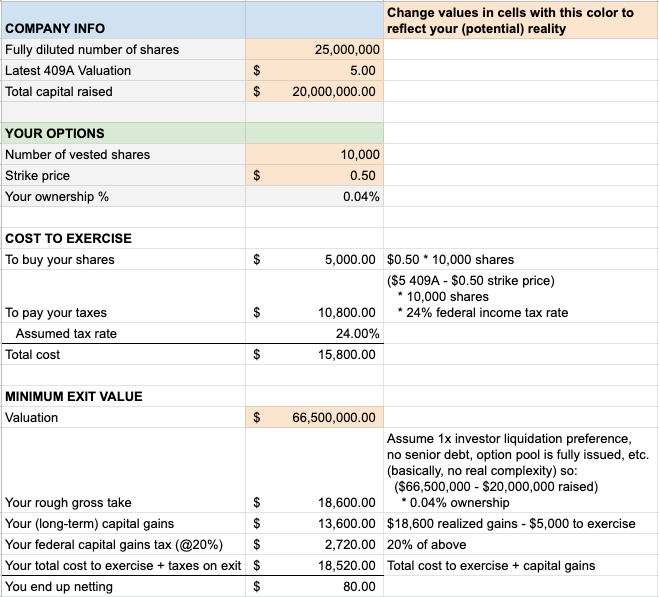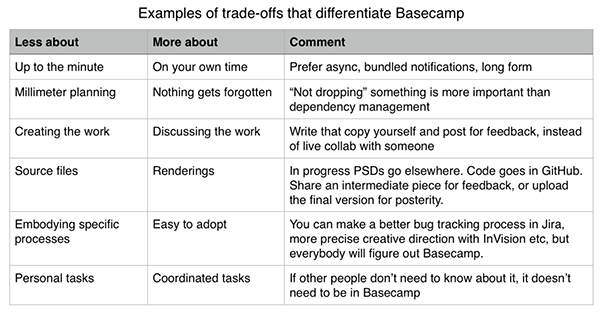I don’t often write about it, but if you’ve ever browsed my books, you know I love reading/thinking about geopolitics.
Back in 2017, I read Destined by War by Graham Allison, former dean at Kennedy School of Government at Harvard and former Assistant Secretary for Defense for Policy and Plans under Bill Clinton. The guy eats, drinks, and breathes geopolitics. The book examines the Thucydides Trap, which is a concept that a rising power and an incumbent power will tend to conflict, resulting in war. The “trap” part of it implies that it’s not entirely inevitable and the powers can avoid war through deft policy and generally not being idiots. Allison first introduces the concept, the history behind it, including many examples where powers fell into the trap and a few examples where they didn’t.
Then he gets to China and the US.
The reason I’m even writing this is I just listened to an episode of the All In podcast (hosted by Jason Calacanis and Chamath Palihapitiya) where they talked about China. (You can check out a clip I bookmarked here or follow me on TLDL for all my clipped bookmarks.) I loved the discussion and that episode prompted me to revisit my notes on Destined for War because, lately, things are getting a little hotter between China and the US.
So, here they are from 2017, with some present-day annotations, in no specific order and with no specific purpose other than to put it all out there.
My notes are structured as:
notes about Allison’s framework of clues that indicate peace is possible,
general notes re: Trump + China, and
my layman’s proposal for US strategy I scribbled down after reading this book in 2017.
2017 vs. 2020
Clues for Peace
Higher authorities can help resolve rivalry without war.
UN (sovereign discussions) or The Hague (legal issues; human rights, etc.) — each have their own limits
States can embed themselves so tightly into larger political, economic, security, and social institutions that help reduce historically “normal” behavior.
E.g., Germany in the EU.
Make a virtue of necessity and distinguish needs vs. wants.
E.g., UK vs. US in the 19th/early 20th centuries.
Timing is crucial
E.g., UK could’ve supported Confederacy in Civil War that would’ve reduced the US to “manageable proportions.” But, they didn’t.
Cultural commonalities can help prevent conflict.
E.g., UK & US spreading English-speaking peoples. The British felt that at least an English-speaker power would be in charge.
There is nothing new under the sun - except nuclear weapons.
Basically, everything has a historical precedent, except for the reality of nuclear weapons. That’s something the world hasn’t ever seen before and materially changes strategic calculations.
2020 NOTE: Although propaganda and misinformation has always existed, technology enables a scale never before seen.
MAD (mutually assured destruction) really does make all-out war machines.
E.g., US vs. Russia and, now, US vs. China (and Russia). All nuclear-heavy powers are tied at the hip because nuclear war would mean the decimation of those countries (and the potentially the world).
Hot war between nuclear superpowers is no longer a justifiable option.
Why lose a war when you can just “nuke” the problem? That’s the temptation that precludes a conventional (or even not conventional) war between superpowers. If that’s the case, then, cold wars and diplomacy will be the most effective tools…right?
Leaders of nuclear superpowers, however, must still be willing to risk a war they cannot win.
I get why the game of “chicken” exists and why brinksmanship can sometimes win the day and the argument, but if the world were to sever itself from this machismo tendency and cultivate brutal honesty and frankness, could that work? Or is that way too naive?
Thick economic interdependence increases the risk - and lowers the likelihood - of war.
UK and Germany (well that didn’t end well). But, the US and China are so systemically intertwined (think supply chains, componentry, the Chinese need to maintain economic growth at an accelerated rate, Chinese dependency on imported energy). Wait — is China’s push for clean, sustainable energy a long-term tactic to weaning itself off of energy dependence, thus removing one more (but significant) barrier to a war with the US?
2020 NOTE: While I understand the desire to re-shore critical industries like chips, medical equipment, pharmaceuticals, I hope we don’t swing too far and begin extricating ourselves too much to the point that there’s relatively little interdependence. Already, we see that US tech companies aren’t really in China, except Apple (would be the biggest loser).
Alliances can be a fatal attraction.
Don’t get into alliances that will bind you into actions that you’ll hate. And don’t ever do what Wilhelm II did with Austro-Hungary. No blank checks for defense. Although, see Article 5 of US-Japan Security Treaty, which is a good thing.
Domestic performance is decisive.
Don’t be a mess internally because that will not engender foreign support and certainly won’t maximize internal support. Perception is everything. There’s a reason that the #1 US export is American culture, which spread across the world like nothing else. It was irresistible. Let’s keep making it irresistible.
2020 NOTE: Well, I believe the last three years show this one is a dumpster fire.
My general reading notes from 2017 are quoted, my responses are below.
On p. 235, Allison says that both Xi and Trump “are dealmakers.” I think effective dealmakers can only be effective if they are informed. From reports, Trump doesn’t appear to be interested in being incredibly informed on intricate matters. Plus, in the next section, Allison asserts that to actually pull off a rebalance of power, the US needs to first clearly define its own vital interests. Does Trump know our vital interests? From the negation of the Paris Agreement, to the abandonment of TPP (was TPP even a potentially good thing?), to the cold-shouldering of Mexico (pre, during, and probably post-NAFTA negotiations), to the lukewarm (at best) relationship he’s engendering with the EU, and to the inconsistent vocal criticism of NATO, he doesn’t. What makes Allison think he’s actually a (good) dealmaker?
If you make a lot of deals, even if they’re not great, does that still make you a dealmaker?
I think it’s sufficiently clear that (1) we — as a polity — don’t have alignment on what our vital interests are, and (2) whatever they are, if they include any I noted above, Trump doesn’t care. I think it’s also fair to say that since I took this note, it’s only become more clear that he doesn’t care about details and doesn’t really read for nuance on inherently intricate, geopolitical matters.
The one thing he has going for him is that he’s chaotic and unpredictable. In that, he’s done a good job of calling out China for some admittedly poor behavior, but isn’t consistent (think: calls out IP theft + trade deficits, but ignores human rights abuses). Intentional strategy or reflection on character? I’m going to go with the latter.
If the Chinese take a long view of history and strategy, how do they view a presidency like Trump’s? Will it appear to be more of a populist, nationalist “flash in the pan” type of administration? I presume they’ll want to see if this is an emerging trend, alternatively.
In recent days, it’s come out that China would prefer if Trump lost his reelection bid. More than anything, they just don't like his unpredictability and chaotic nature. Put beside his performance re: China, I can't tell whether this is a good thing or a bad thing. If you're unpredictable not only to your alleged adversary, but also your own team/allies/advisors/country, is that net neutral or worse?
I think the "China, we need to have some serious talks about trade, business, etc." is out of the box, so kudos to Trump on starting that conversation in a bigger way than prior administrations, but I don't think he's the one to finish the job and actually tilt the table in the US's favor. Here’s a clip of the All In podcast that editorially covers just that.
Can long-term US strategy towards China rally politicians to actually focus on domestic issues in the short- to mid-term to bolster US leverage and focus in the future? Does there seem to be the awareness - and appetite - for that?
We’ll see in 2020.
Proposal
Define US vital interests (at least mutually agreed-upon vital interests Rs and Ds can get behind).
Assuming securing North America and retaining influence over the Western Hemisphere are two of those vital interests, then:
Get as close as possible to Mexico and Canada
Re-up mutually favorable trade agreements
Identify top issues from Canadian perspective re: US/Canadian relations (and borders) and address
Partner with Canada on Arctic initiatives
Sincerely work to heal US-Mexico relationship and perception
Immigration reform
Create more viably open borders (of course still need security)
Dramatically and swiftly address drug problem in US; realize the drug problem is an American problem and can only be solved by Americans in the US — not in Mexico. If demand dies, supply dies.
Re-up and strengthen existing (and create new?) intelligence/military partnerships
Invest in Mexican industry, infrastructure, and people
Set up more educational sharing programs
Help with disasters more formally and comprehensively
Start huge PR campaign with Americans to de-demonize illegal immigration
In tandem with strengthening Canadian/Mexican relations, begin to repair Central/South American relationships. We have a lot of meddling to make up for, while staying firm on certain expectations around quality of life and specific “American/universal” values.
TODO: What is US policy towards Brazil?
Re-edify UK/EU support and strengthen relationships.
This could help Canadian/Mexican/South American relationships, too, but implement more liberal study abroad (both academic and vocational) programs. More Americans need to travel to help breed higher levels of global empathy, familiarity, and interest. (Assumption that travel helps.)
Has the added benefit of continuing to act as a bulwark to Russian idiosyncrasies.
Re-open Pacific trade talks with Pacific nations, including China.
Implement stronger cultural sharing between Americans and Chinese. Study abroad is one way, but should be more about cultural sharing and integration than merely sharing academia.
Chinese and American culture are widely distant. This exercise could help bridge the gap and identify base commonalities, or at the very least breed familiarity and empathy.
Could also subsidize travel between the countries.
Revisit/strengthen Pacific alliances.
Japan
Phillippines
South Korea
Australia
New Zealand
Vietnam (shocked that 84% of Vietnamese surveyed in 2017 view US favorably)
Malaysia (?)
Indonesia (?)
Singapore (?)
Taiwan
Be honest with China about US interests and the desire for avoiding escalating tensions; be open to Chinese demands to have a hand in global governance.
Invest in cyber defense and offense. Seriously.
Invest in satellite defense.
Continue to build up navy, especially Arctic force.
Focus on healing domestic issues
Immigration will be part of foreign policy, which is a double whammy (awesome)
Drug reform will be part of foreign policy (awesome)
Open borders will require infrastructure investments
More vocational/educational sharing programs will require actually having vocational programs, which lends itself to economic reform and helping to re-shape the population (dampening economic inequality).
A Pacific trade agreement could help with revitalization of American industry.
Uncompromisingly work towards social equality. No use living in the past. Regain moral high ground.
Restart spreading American values through business, government, and academic sharing.








